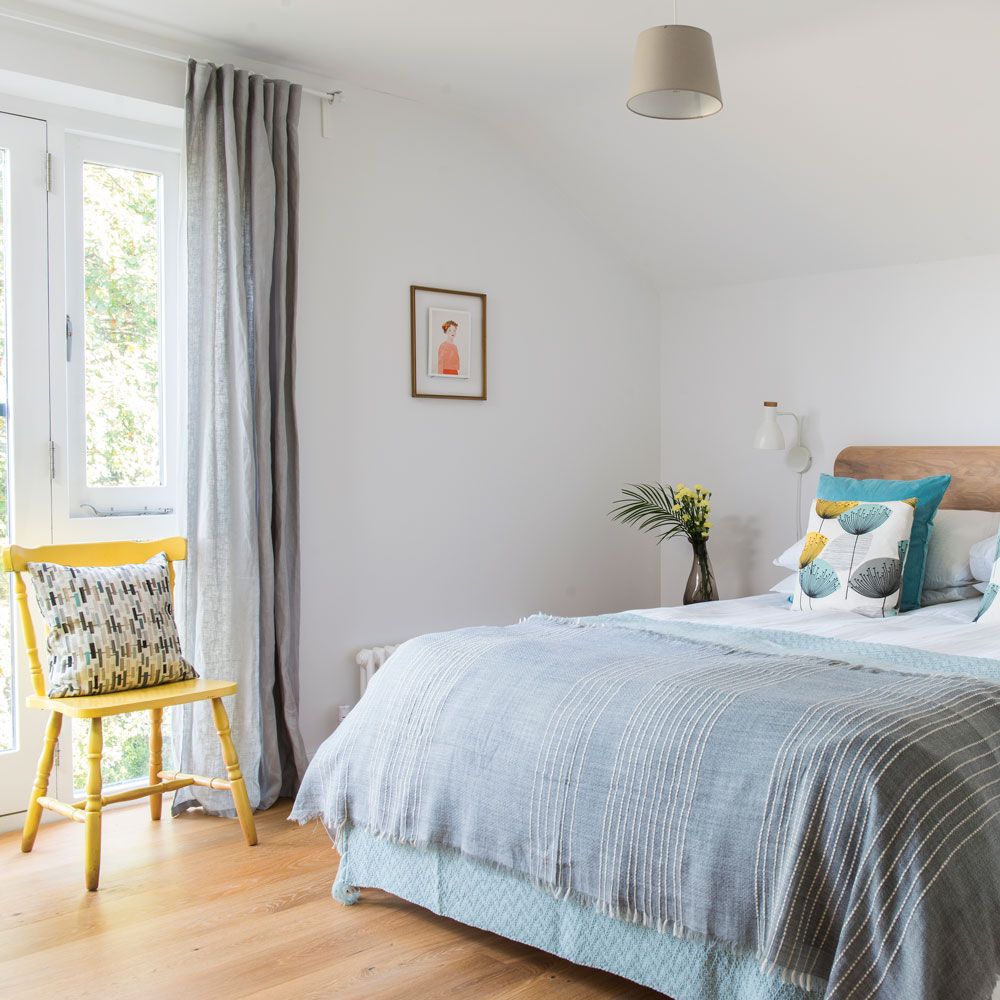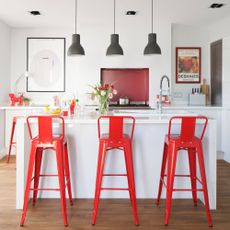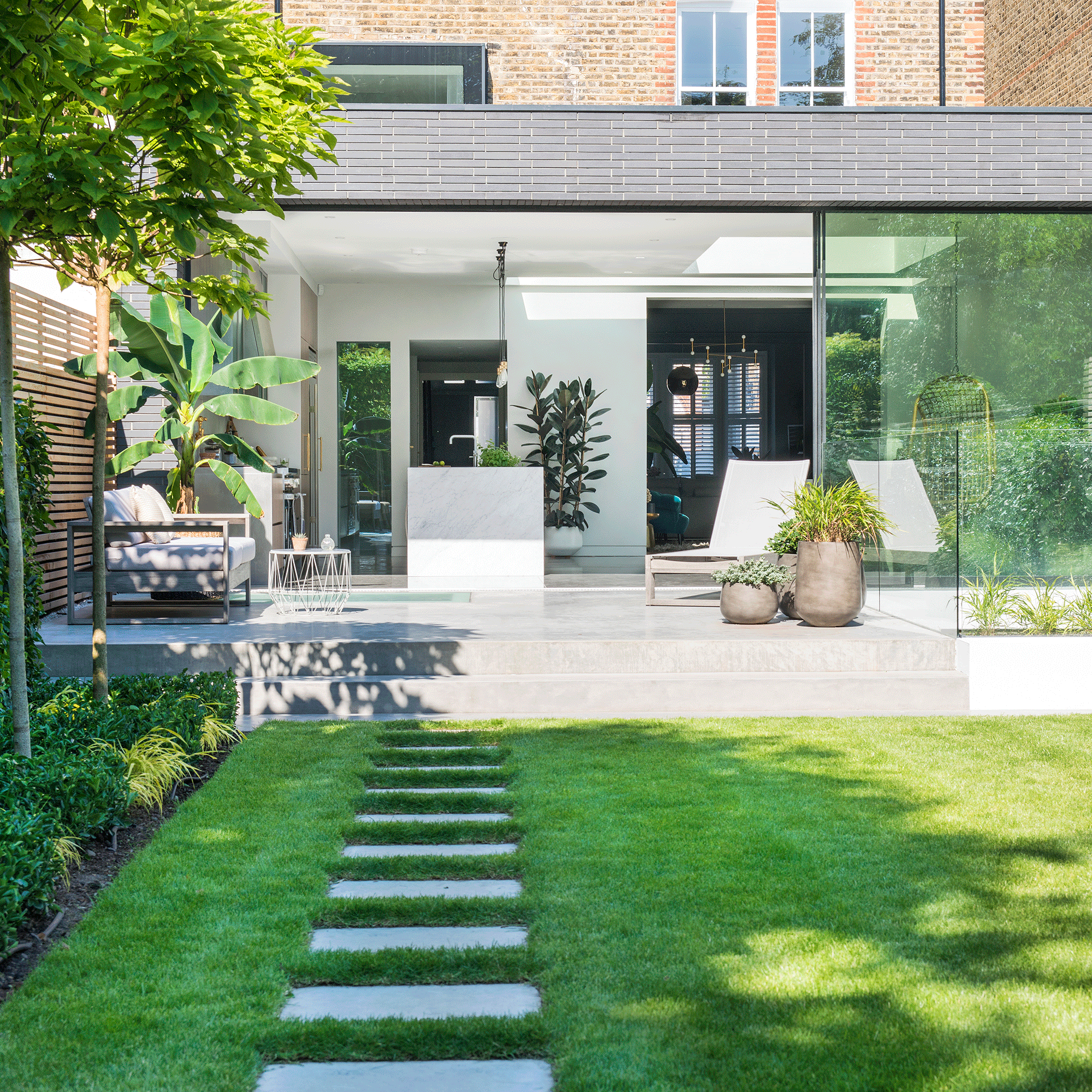How to arrange furniture in a bedroom - configuration is key to a restful room
9 steps to create a dreamy bedroom furniture set up
- (opens in new tab)
- (opens in new tab)
- (opens in new tab)
- Sign up to our newsletter

Maximising available space is key to any successful room scheme. However if you know how to arrange furniture in a bedroom, the benefits may be wider ranging than a comfortable room.
According to recent research from sleep brand, Silentnight, around 16 million UK adults suffer from sleepless nights with two thirds (67%) suffering from disrupted sleep. The reasons for this are multitude, but cool, comfortable and uncluttered bedroom ideas can help reduce stress, and enable you to sleep better.
'Our homes are meant to be our sanctuaries, where we go to rest, relax and recharge. But when the clutter gets too much, they can feel anything but relaxing,' says Kate Yiannacou, APDO Member and Founder of Tidy Happy Calm (opens in new tab).
'If you're not sure where to start; start in the place where you need to feel at your most peaceful – in the bedroom.'
How to arrange furniture in a bedroom
1. Measure the space

Before choosing furniture, and certainly before working out how to arrange furniture in a bedroom, you need to know exactly how big the room is, this will effect whether you need to look into some small bedroom ideas, or have more space to work with It is also important to note any alcoves or awkward corners (as these may be great for storage solutions).
It's useful to know the size of the doorway and the door opening too, as this can affect furniture placement.
Also work out which way the room faces (north, south, east or west). Then draw it out to scale on a piece of paper, so that you can plot where you'd like furniture and lighting to go and the maximum size it should be.
2. Work out where the largest items will go first

Once you've plotted the room out on paper, you can work out where you want the bed and wardrobes to go and the sizes that will suit.
Most interior designers agree that the bed in most master bedroom ideas should be placed against a wall rather than under a window. According to Feng Shui principles it's best if the head of your bed faces south and your feet aren't pointed towards the door. However, if this is not possible, a well configured room will reap rewards where stress reduction is concerned.
When planning how to arrange furniture in a bedroom, it's worth placing newspaper on the floor to mark out where the bed, wardrobe and chest of drawers will go. Then you can get an idea of how the room will flow, or not, and adjust the sizes or spacing required.
3. Check there is space for doors to open

If you're opting for a bed with storage drawers underneath, check there is enough room to open them once the bedside cabinets are in place.
Also make sure that you will be able to open wardrobe doors, once other items like the bed or bedside cabinets are in place.
If you there isn't enough space to open doors or drawers, consider wall-hung bedside shelves or a ledge behind the bed instead. Wall lamps are another way to reduce the amount of surface space needed.
With fitted wardrobe ideas there is usually the option of sliding doors or curtains, and these are a good way to maximise space.
4. Work out what type of storage you need

There's no point having tons of drawer space if most of your clothes need to be hung from rails. So look at what you wear and how it is best stored before investing in any bedroom storage ideas.
It's common practice for high-end designers and interior architects to count their client's shoes, bags and clothes before designing wardrobes. So it's worth doing an audit of your own stuff before choosing and planning how to arrange furniture in a bedroom.
Don't forget about storing bed linen, winter duvets and throws too. If you'd rather not have these in the wardrobe, a blanket box or ottoman at the end of the bed can double up as a seat and storage.
'It’s important to get storage right, particularly for those items that you need to use often but don’t want on show such as hair dryers,' says Clara Ewart, head of design, Kitesgrove (opens in new tab).
'Built-in storage can be achieved inexpensively but really helps a room to feel decluttered and calm. For a bit of character, try painting the inside of the wardrobes a bright or contrasting colour.'
5. Consider fitted wardrobes

As lovely as freestanding wardrobes look, if you're short on space, fitted wardrobe ideas will offer way more storage.
Shaker style fitted cupboards aren't just for the kitchen either, they're a popular choice in the bedroom too.
'Shaker design style started back in the 18th century. One of its core principles was that function should come before everything else – with clean lines and simplicity at its heart,' explains Megan Baker, design expert, My Fitted Wardrobe (opens in new tab).
'With its simple, repetitive, recessed panel design, shaker style fitted wardrobes look stylish and sophisticated – providing an understated backdrop to build a design scheme around.
'It is the minimalistic look which has stood the test of time and why shaker influences are still one of the most popular design looks throughout the home.'
6. Look at where the sockets are

No-one wants extension leads trailing behind the bed, so that lamps can be plugged in. So to decide how to arrange furniture in a bedroom, look at where your electrical sockets are located and decide whether you need to have any extra fitted near the bed or dressing table. For a scheme to work you need to be able to plug in bedside lamps easily or dry your hair in a comfortable spot. If you're brainstorming guest bedroom ideas this is extra important to ensure guests a comfortable stay.
It's not an expensive job to have extra sockets installed by an electrician. However, it is much better to have this done - or wall lamps installed - before you decorate.
If you're opting for wall lamps, have them run on a separate circuit to your overhead light, so you can switch them on or off separately.
7. Tuck a dressing table into an alcove

A popular place for a dressing table is within a bay window. This not only makes use of an awkwardly shaped space, it provides plenty of natural light when putting on make up.
If your bedroom doesn't have a bay window, look at whether there is an alcove you can use. In a small space, instead of a bulky piece of furniture, consider fitting a shelf where you can place perfumes or beauty paraphernalia, with a mirror on the wall and stool underneath.
Again, make sure the plug socket is nearby, so you can plug in a hairdryer.
8. Save space with wall or door panel mirrors

An easily overlooked item in a bedroom scheme is a full standing mirror. Yet if you want to be able to check your outfit before you head out, this is an integral part of working out how to arrange furniture in a bedroom.
A freestanding mirror that can be moved around is ideal, however, if this isn't practical, make use of available wall or wardrobe door space.
'Adding mirrors to your design will break up the solid panels, creating a more contemporary final look,' says Megan from My Fitted Wardrobe. 'Using mirrors is a great way of adding more depth to a finished scheme and they provide a practical add on.'
9. Layer your lighting

It is normal practice to layer lighting in a living room, with overhead, task and accent lamps. The same applies to bedroom lighting ideas too. It's essential to have a bright overhead light for getting ready in the evenings. As well as soft mood lighting or lamps for reading.
'Bedrooms are practical as well as relaxation spaces, so plan your lighting accordingly,' advises Peter Bowles, MD, Original BTC (opens in new tab). 'Consider different types of light fitting, not just the light they provide. Wall-mounted lights are great space-savers in small or low ceilinged rooms and create a boutique hotel look.
'Remember to illuminate areas such as dressing tables, wardrobes and reading nooks, where more focussed task light is required.'
Where do I start when furnishing a bedroom?
When deciding how to arrange furniture in a bedroom, it's best to start by measuring the room and working out where the largest items, such as the bed and wardrobe will go. Once they're in place on your plan, you can work out the available space that's left and the rest should follow.
What pieces of furniture should be in a bedroom?
To know how to arrange furniture in a bedroom, you of course need to know what pieces should be included. The most important piece of furniture is obviously the bed - you're going to need somewhere to sleep! Next is the wardrobe for clothes, shoes and accessory storage.
Ideally you'll have a chest of drawers or two, a couple of bedside cabinets and a dressing table with a stool, if there is enough space.
An ottoman or blanket box can double up as a seat and storage and don't forget a laundry basket. A chair is a nice touch, although be aware it can become the equivalent of a 'floor-drobe' if you're not mindful about hanging things up.
Jacky Parker is a freelance interiors & lifestyle journalist, specialising in modern interiors, design and eco living. She has written for Future’s interior magazines and websites including Livingetc, Homes & Gardens, Country Homes & Interiors and Ideal Home for over fifteen years, both as a freelance contributor and inhouse, with stints as Acting Digital Editor, Livingetc and Acting Style Content Editor, Country Homes & Interiors. Her work also features in national and international publications including Sunday Times Style, Telegraph Stella, The Guardian, Grand Designs, House Beautiful and more. With years of experience in the industry Jacky is privy to the insider view and the go-to places for interior inspiration and design-savvy décor.
-
 Ultimate kitchen spring cleaning checklist – the only kitchen cleaning list you’ll need
Ultimate kitchen spring cleaning checklist – the only kitchen cleaning list you’ll needCheck these chores off to keep your kitchen in tip top condition
By Tara King
-
 How to get rid of moss in a lawn – 5 steps to healthy grass
How to get rid of moss in a lawn – 5 steps to healthy grassFollow these tried and tested expert methods to rid your lawn of moss
By Rachel Crow
-
 These old drawers got a surprisingly new look with Farrow & Ball's beverly paint
These old drawers got a surprisingly new look with Farrow & Ball's beverly paintVinterior and Farrow and Ball have teamed up to show us how to give secondhand furniture a luxury spin
By Laurie Davidson


